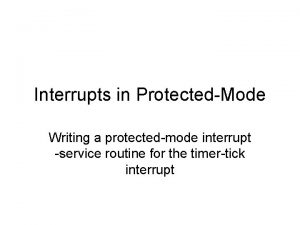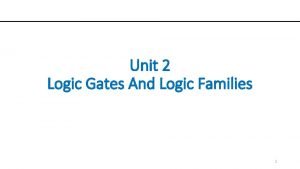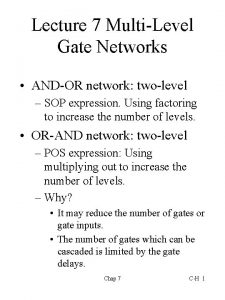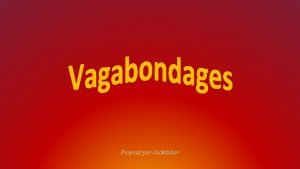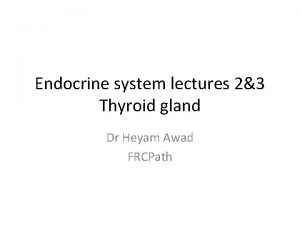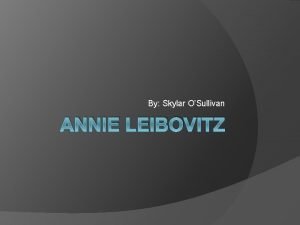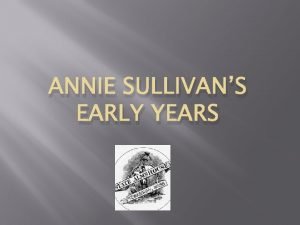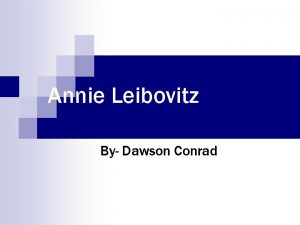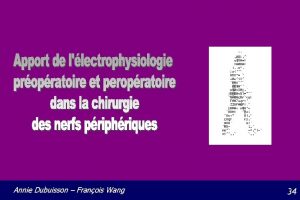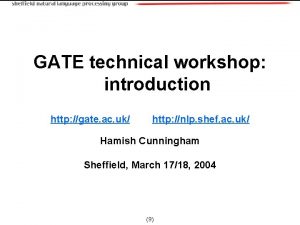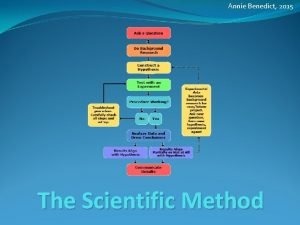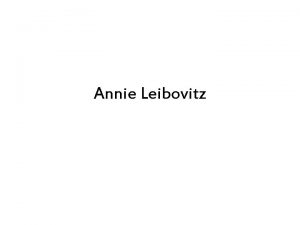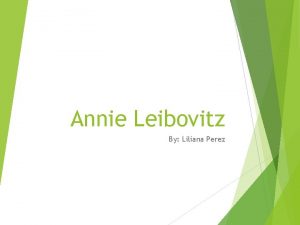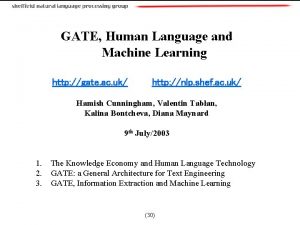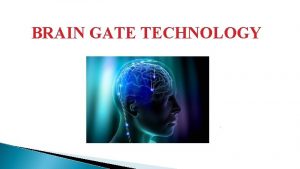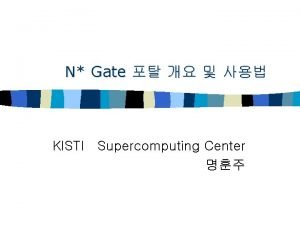Introduction to ANNIE http gate ac uk http




















- Slides: 20

Introduction to ANNIE http: //gate. ac. uk/ http: //nlp. shef. ac. uk/ Diana Maynard University of Sheffield March 2004

What is ANNIE? • ANNIE is a vanilla information extraction system comprising a set of core PRs: – – – Tokeniser Sentence Splitter POS tagger Gazetteers Semantic tagger (JAPE transducer) Orthomatcher (orthographic coreference)

ANNIE Pipeline

Other Processing Resources • There also lots of additional processing resources which are not part of ANNIE itself but which come with the default installation of GATE – Gazetteer collector – PRs for Machine Learning – Various exporters – Annotation set transfer etc….

Creating a new application from ANNIE • Typically a new application will use most of the core components from ANNIE • The tokeniser, sentence splitter and orthomatcher are basically language, domain and application-independent • The POS tagger is language dependent but domain and applicationindependent • The gazetteer lists and JAPE grammars may act as a starting point but will almost certainly need to be modified • You may also require additional PRs (either existing or new ones)

Modifying gazetteers • Gazetteers are plain text files containing lists of names • Each gazetteer set has an index file listing all the lists, plus features of each list (major. Type, minor. Type and language) • Lists can be modified either internally using Gaze, or externally in your favourite editor • Gazetteers can also be mapped to ontologies • To use Gaze and the ontology editor, you need to download the relevant creole files

JAPE grammars • A semantic tagger consists of a set of rule-based JAPE grammars run sequentially • JAPE is a pattern-matching language • The LHS of each rule contains patterns to be matched • The RHS contains details of annotations (and optionally features) to be created • More complex rules can also be created

Input specifications • The head of each grammar phase needs to contain certain information – Phase name – Inputs – Matching style e. g. Phase: location Input: Token Lookup Number Control: appelt

Matching algorithms and Rule Priority • 3 styles of matching: – Brill (fire every rule that applies) – First (shortest rule fires) – Appelt (use of priorities) • Appelt priority is applied in the following order – Starting point of a pattern – Longest pattern – Explicit priority (default = -1)

NE Rule in JAPE Rule: Company 1 Priority: 25 ( ( {Token. orthography == upper. Initial} )+ //from tokeniser {Lookup. kind == company. Designator} //from gazetteer lists ): match --> : match. Named. Entity = { kind=company, rule=“Company 1” }

LHS of the rule • LHS is expressed in terms of existing annotations, and optionally features and their values • Any annotation to be used must be included in the input header • Any annotation not included in the input header will be ignored (e. g. whitespace) • Each annotation is enclosed in curly braces • Each pattern to be matched is enclosed in round brackets and has a label attached

Macros • Macros look like the LHS of a rule but have no label Macro: NUMBER (({Digit})+) • They are used in rules by enclosing the macro name in round brackets ( (NUMBER)+): match • Conventional to name macros in uppercase letters • Macros hold across an entire set of grammar phases

Contextual information • Contextual information can be specified in the same way, but has no label • Contextual information will be consumed by the rule ({Annotation 1}) ({Annotation 2}): match ({Annotation 3})

RHS of the rule • LHS and RHS are separated by • Label matches that on the LHS • Annotation to be created follows the label (Annotation 1): match : match. NE = {feature 1 = value 1, feature 2 = value 2}

Using phases • Grammars usually consist of several phases, run sequentially • Only one rule within a single phase can fire • Temporary annotations may be created in early phases and used as input for later phases • Annotations from earlier phases may need to be combined or modified • A definition phase (conventionally called main. jape) lists the phases to be used, in order • Only the definition phase needs to be loaded

More complex JAPE rules • Any Java code can be used on the RHS of a rule • This is useful for e. g. feature percolation, ontology population, accessing information not readily available, comparing feature values, deleting existing annotations etc. • There are examples of these in the user guide and in the ANNIE NE grammars • Most JAPE rules end up being complex!

Using JAPE for other tasks • JAPE grammars are not just useful for NE annotation • They can be a quick and easy way of performing any kind of task where patterns can be easily recognised and a finite-state approach is possible, e. g. transforming one style of markup into another, deriving features for the learning algorithms

Example rule for deriving features Rule: Entity ( {Gpe}| {Organization}| {Person}| {Location}| {Facility} ): entity --> { gate. Annotation. Set entity. AS = (gate. Annotation. Set)bindings. get("entity"); gate. Annotation entity. Ann = (gate. Annotation)entity. AS. iterator(). next(); gate. Feature. Map features = Factory. new. Feature. Map(); features. put("type", entity. Ann. get. Type()); output. AS. add(entity. Ann. get. Start. Node(), entity. Ann. get. End. Node(), "Entity“, features); }

Finding Examples • ANNIE for default NE rules: gate/src/gate/resources/creole/NEtransducer/NE/ • MUSE for more complex NE rules: muse/src/muse/resources/grammar/main • h-Tech. Sight for ontology population: htechsight/application/grammar • Various other applications generally follow the format: projectname/application/grammar/

Conclusion This talk: http: //gate. ac. uk/sale/talks/annie-tutorial. ppt More information: http: //gate. ac. uk/
 Trap gate vs interrupt gate
Trap gate vs interrupt gate Not gate boolean expression
Not gate boolean expression Nand gate to and gate
Nand gate to and gate Annie hudson bristol
Annie hudson bristol Annie prasad
Annie prasad Annie faure peintre
Annie faure peintre Annie faure
Annie faure Summary of living like weasels
Summary of living like weasels Annie chapman
Annie chapman Robbins
Robbins Annie chancel
Annie chancel Annie faure peintre
Annie faure peintre Annie leibovitz queen elizabeth
Annie leibovitz queen elizabeth Anne sullivan brother
Anne sullivan brother Annie stegg
Annie stegg Annie o'connor physical therapist
Annie o'connor physical therapist Annie leibovitz queen elizabeth
Annie leibovitz queen elizabeth Annie leibovitz education
Annie leibovitz education Annie gilbert
Annie gilbert Annie dubuisson
Annie dubuisson Annie beghin
Annie beghin
